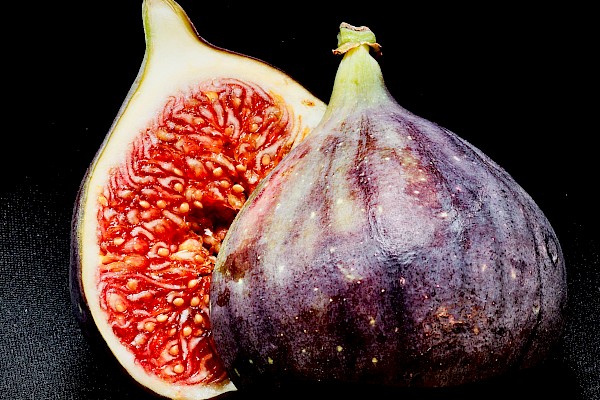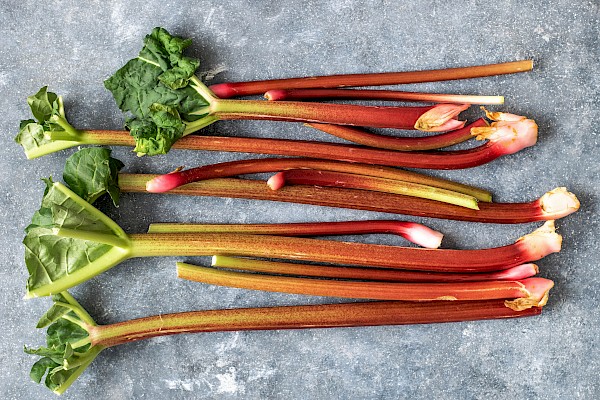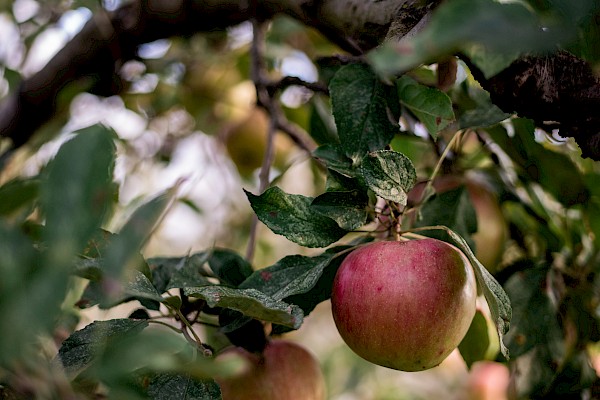Kiwi
Do you like this small fruit with the furry brown skin and bright green or gold flesh? If you answered the question with a “yes!”, then you can count yourself lucky, because the kiwi isn’t just delicious and low-calorie, it is also a real vitamin bomb!
Before we take a closer look at the kiwi, let’s reveal a small secret: the kiwi’s story begins with a misunderstanding. Many people believe that it originates in New Zealand, and actually, that is where most of the kiwis that we consume in Switzerland are imported from. However, their origin can be found in the hills and mountains of south-western China, which is why the kiwi is also called the Chinese gooseberry: it is the fruit of the Chinese actinidia.
So why is the kiwi called kiwi?
At the beginning of the 20th century, the kiwi found its way from China to New Zealand, where it has been cultivated commercially since the 1930s. However, it received its modern name only much later, in the sixties, when it was named after New Zealand’s national bird, the kiwi, to boost exports.
Now to what’s inside the kiwi – the vitamins – that make this berry so healthy.
A vitamin bomb
Do you need a vitamin C boost? Then grab a kiwi! It contains twice as much vitamin C as an orange, which doesn’t just strengthen your immune system, but is also a blessing when times are stressful. As an adult, all you have to do to obtain your daily vitamin C requirement of 100 milligrams is eat one portion of kiwi (approximately 120 grams). So it’s very good as a healthy snack for between meals. The vitamin C content is the same regardless of whether you’re eating a green kiwi or a yellow one.
As well as vitamin C, kiwis contain other nutrients such as vitamins E, B1, B2, B6, B9 (folic acid) and B12.
Folic acid
As well as its rich vitamin C content, the kiwi is a good, natural source of folic acid. The green and yellow-gold fruits have the same vitamin C content but vary in their folic acid content. Studies show that yellow-gold kiwis pack in more folic acid than their green cousins – 100 grams of yellow-gold kiwi contain approximately 31 µg folic acid, whereas the same amount of green kiwi only contains 25 µg. The recommended daily intake of 400 µg folate equivalent for adults (folate equivalent = 1 μg of dietary folates or 0.5 μg of synthetic folic acid in galenic form taken on an empty stomach or 0.6 μg synthetic folate added to food) is difficult to achieve with dietary folates, which occur naturally in food, like kiwis. A balanced diet should contain approxi-mately 250 to 350 μg dietary folates. To reach the recommended 400 μg, you would need to consume an excessive quantity of fruit and vegetables, or to frequently eat wheatgerm and/or liver – or foods fortified with folic acid. In order to increase folic acid intake and prevent a deficiency, the consumption of folaterich, fresh foods (such as soya beans, spinach, brassicas, wheatgerm, strawberries, liver) is recommended. The food should be as fresh as possible when it is gently prepared and consumed. In addition, foods fortified with folic acid are suitable for increasing folic acid intake. Last but not least, there is also the option of taking synthetic folic acid in tablet form. This is particularly recommended for pregnant women and women of childbearing age.
Although kiwis are one of the smaller fruits, you shouldn’t underestimate them, because as already described, many valuable substances are hiding under their furry brown skin. There are a few things to look out for to make sure that these substances remain undamaged until they are eaten – see our tips below.
Kiwi tips
- You know a kiwi is ripe when it gives way a little when you press it with your finger. However, even then kiwis will keep for a few more days.
- Kiwis stay fresh for longer if you store them in the vegetable drawer of your fridge at +8° bis +10°C.
- Assuming you don’t want to speed up the kiwi’s ripening process, you are better off storing the fruit separately from apples, pears, apricots, bananas and peaches. These fruits give off ethylene, a gas that speeds up ripening.
- The easiest way to eat a kiwi is to cut it in half and scoop out the flesh with a spoon.
- But you can also bite directly into the kiwi like an apple – many people either don’t know this or find it crazy and a bit disgusting. The fruits can be eaten with their skins without any problems. However, if you want to do this, the recommendation is to choose untreated organic products.
Our recipe tip
Fruit muesli with cottage cheese
(Ingredients for 1-2 people)
- 150 g fruit such as kiwis, apples, apricots (according to taste)
- 100 g cottage cheese
- 100 g natural yogurt
- 2 tablespoons whole oats
- 5 almonds
- 1 tablespoon lemon juice
- a little honey
Method: add the honey to the yogurt and cottage cheese and mix well. Stir in the oats and leave to soften a little if necessary. Cut the fruit and almonds into small pieces and mix in.
Tips: depending on how sweet the fruits are, you may not need extra sweeteners such as honey. You can prepare several days’ worth of fruit muesli and store it, covered, in the fridge. While you are still working from home, this makes the perfect simple, light breakfast or lunch. Instead of oats, you can also use millet flakes, spelt flakes or soya flakes.
(Source)
References:
Eichholzer, M., Camenzind-Frey, E., Amberg, J., Baerlocher, K., Moser, U., Rosé, B., Tönz, O. (2008). Folsäure ist unentbehrlich für die normale Entwicklung des Kindes. Bern: Federal Food Safety and Veterinary Office (FSVO).
Richardson, D. P., Ansell, J. & Drummond, L. N. (2018). The nutritional and health attributes of kiwifruit: a review. European journal of nutrition, 57(8), 2659–2676.
Stonehouse, W., Gammon, C. S., Beck, K. L, Conlon, C. A., von Hurst, P. R., Kruger, R. (2013). Kiwifruit: our daily prescription for health. Can J Physiol Pharmacol, 91(6), 442-7.
 subscribe to newsletter
subscribe to newsletter


